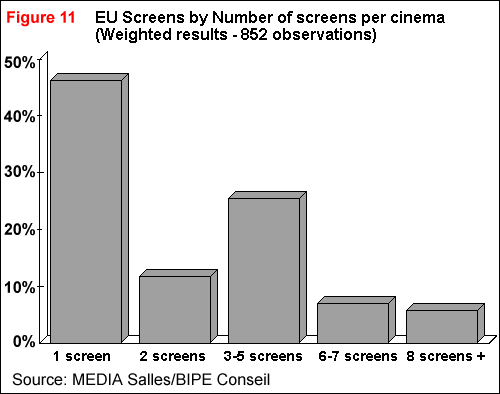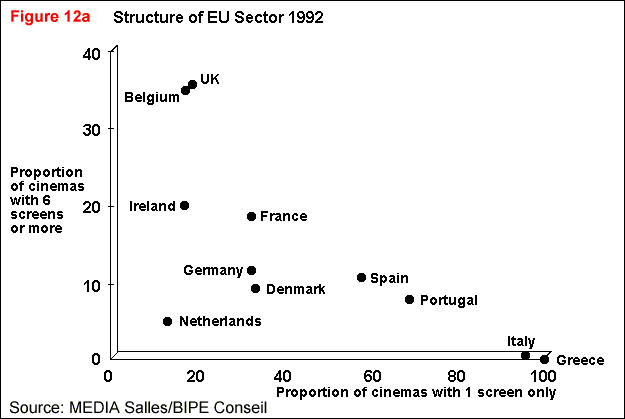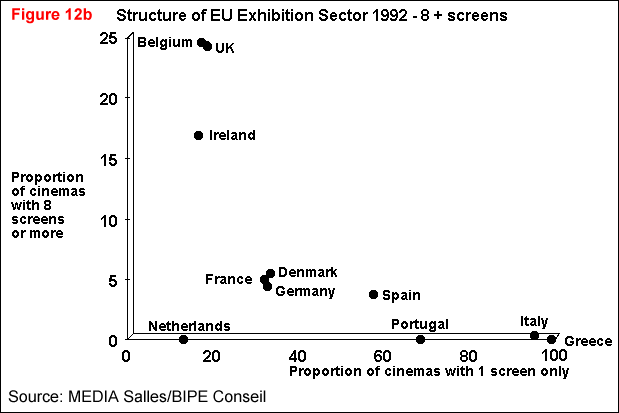
|
|
|||||
|
Number of Screens
|
|
|
|
|
|
| Belgium |
17.4
|
11.6
|
36.0
|
10.4
|
24.6
|
| Denmark |
33.3
|
21.0
|
36.5
|
3.8
|
5.4
|
| France |
32.3
|
13.4
|
35.8
|
13.5
|
5.0
|
| Germany |
32.4
|
20.0
|
36.0
|
7.0
|
4.6
|
| Greece |
99.5
|
0.5
|
-
|
-
|
-
|
| Ireland |
16.9
|
25.4
|
37.6
|
3.2
|
16.9
|
| Italy |
97.6
|
1.3
|
0.5
|
0.3
|
0.3
|
| Netherlands |
13.2
|
21.6
|
60.4
|
4.8
|
0.0
|
| Portugal |
68.5
|
10.3
|
13.4
|
7.8
|
0.0
|
| Spain |
57.7
|
8.0
|
23.7
|
6.9
|
3.7
|
| UK |
18.7
|
12.3
|
33.3
|
11.2
|
24.5
|
| Source: MEDIA Salles | |||||
The barriers to entry raised by the strategy of creating multi-screen cinemas has undeniably given the circuits an edge over the independent exhibitors, especially in countries where there are two or more major players in competition with one another. Table 9 shows how the number screens in multi-screen cinemas is much greater for cinemas belonging to circuits than for independents and publicly-funded cinemas.
|
|
|||||
|
No. of screens in cinema
|
|
|
|
|
|
| Cinemas belonging to a circuit |
37.6%
|
8.8%
|
30.8%
|
9.1%
|
13.8%
|
| Cinemas belonging to an independent |
59.1%
|
12.8%
|
25.1%
|
2.6%
|
0.3%
|
| Cinemas belonging to the public authorities or to a non profit-maximising organisation |
63.9%
|
21.3%
|
4.1%
|
-
|
-
|
| Source: MEDIA Salles/BIPE Conseil | |||||


